Jingmen
( chinatravel.com, travelchinaguide.com, wikipedia )
|
|||||||||
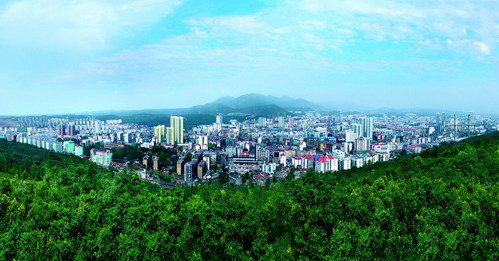 |
| Jingmen is located in the heart of Hubei province. (photo from nipic.com) |
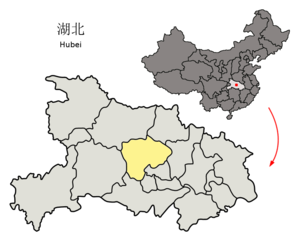
Located in the heart of Hubei province, Jingmen can be the communication hub inside the province. It is 217 kilometers west of the provincial capital, Wuhan, and 120 kilometers east of Yichang city. Bounded on its south and north are Jingzhou and Xiangyang cities. Jingmen has a population of near 3 million, and with the area of 12,400 square kilometers.
Although this area was inhabited as early as the Neolithic Age, it was established as an administrative unit in the late Shang Dynasty (16th - 11th century BC). The name of Jingmen began in the Tang Dynasty (618 - 907) when the government established county to administrate this area.
Lying between the Jingshan Mountain and the Jianghan Plain, Jingmen has lower mountains and hills in its northwest and central part. Plains and lakes are mainly distributed in southern Jingmen. Hanjiang River traverses the whole area of Jingmen. The Jiaozuo-Panzhihua railway gets through Jingmen from south to north. The highway here is also very convenient, mainly with No 207 state highway, Jingqian highway and Hanyi highway, which extend to every direction. Flights from Jingmen airport can fly to Beijing directly. Nowadays, Jingmen has the convenient transportation tools of highways, waterways, railways, pipe transportation and aviation.
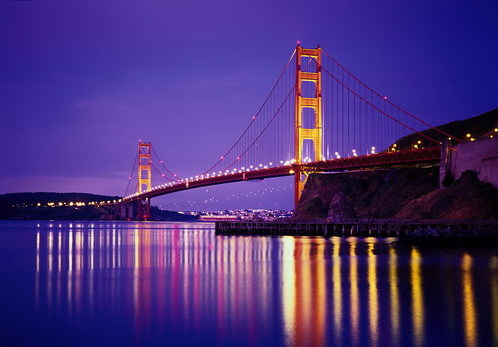 |
| Jingmen Bridge (photo from nipic.com) |
Enjoying a subtropical monsoon climate, the city has a relatively temperate weather, rich in rainfall and sunshine. With clear four seasons, it has an annual average temperature of 16℃ (61℉).
Jingmen city is one of the earliest original places of Chu culture. It has been listed as the famous historical and cultural city by Hubei government. Zhongxian city, which is under Jingmen’s jurisdiction, is a famous historical and cultural city. Among those, there are many key historical and cultural sites under the government’s protection. Qujialing cultural relic has a history of 4,600 years. The Ming Tombs are accredited as “the underground treasure house of Chu culture”, and are also the biggest tombs only for one emperor. In 1998, “the woman’s body from the Warring States period” was excavated. Although the body has 2,300 year history, it was preserved well. As a result, it was identified as the rare national treasure by State Cultural Relics Bureau. Duodaoshi is located at the south suburban area of Jingmen city. It was the military place for Guan Yu, a general in the Han Kingdom during the period of the Three Kingdoms, to recruit soldiers.
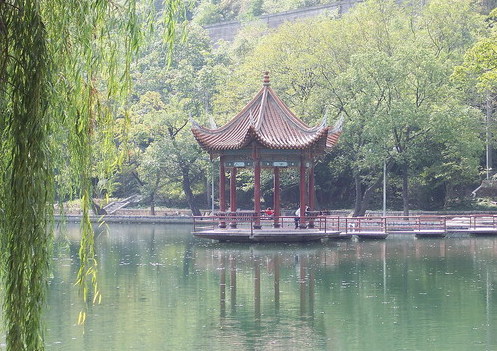 |
| Longquan Academy (photo from nipic.com) |
There are also many famous historical sites in the urban area of Jingmen. The Dongshan Pagoda was built in the Sui Dynasty. The Longquan bookstore and the famous “three rostrums and eight spots” were built in the Qing Dynasty.
Moreover, there are four famous springs in Jingmen city as well, such as Meng Spring, Long Spring, Shun Spring and Hui Spring.
In a word, Jingmen is a charming city, with beautiful landscapes and sceneries.
Spring and autumn are the most favorable seasons to Jingmen.
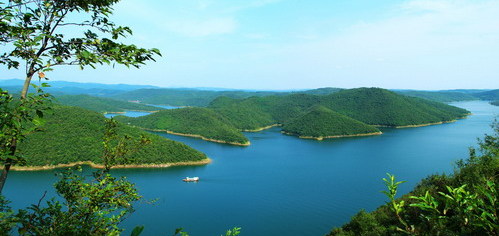 |
| Zhanghe River (photo from nipic.com) |
 |
| Pinghu Lake in Shayang county (photo from nipic.com) |
